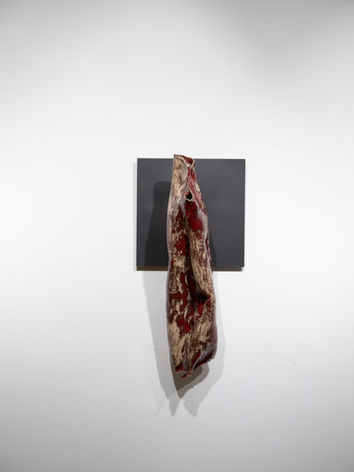

POST-INDUSTRIAL BUTCHERY
The act of eating is placed between tradition and innovation.
It is tradition as it is made up of knowledge, techniques, values that are handed down to us; it is innovation as those knowledge, those techniques and those values modify the position of man in the environmental context, allowing man to evolve in his way of living.
Food is a decisive element in describing the identity - always multifaceted - to which each of us belongs and is one of the most effective tools for communicating it.
The reason why there are specific food behaviors in every culture and religion is that they allow us to describe our status.
The foods themselves take on symbolic, metaphysical, moral and social values, capable of functioning as containers or vectors of ideology.
Food is humanly universal, as a matter of life and death, yet it is profoundly variable, diversified, arbitrary and full of "other" symbolic meanings.
Every cuisine, from the simplest to the most complex, from east to west of the world, it’s a system of cultural combinations.
For the anthropologist Claude Lévi-Strauss, men's relationship with food is analogous to their relationship with language. The human language emits sounds because it is naturally predisposed to do so, but language, grammatical rules, syllables, phonemes, words are the result of some of the infinite cultural combinations in which sounds can be articulated.
The same thing happens in the kitchen: food is the natural source of life, but the way we eat is completely cultural.
Many Jewish and Muslim researcher, for example, worked during the 17th and 18th centuries to demonstrate that there was a scientific basis for which pork was forbidden both in Islam and in Judaism. It was thought that the reason for this taboo was that the pig carried diseases, then that its meat could not be stored appropriately in certain climatic zones, finally it was said that the omnivorous nature of the pig made its meat difficult to digest . None of these reasons can really explain this taboo by itself, because the fact of forbidding the consumption of pork meat has no "scientific" reasons, but rather historical and cultural ones.
There would be an infinite number of examples and they touch on the most varied taboos on animal meat (from horse to cat, from dog to snake), even refraining from eating human flesh is not, in fact, a universal taboo.
And this is the theme of this exhibition project.
Accepting that we are what we eat (food is one of the constituent elements of our multifaceted identity) is already very complicated in itself; but even more complicated is to imagine that in theory – and sometimes also in practice – the reverse would be possible:
EAT WHAT WE ARE.
The idea that someone bites into our meat or that we can find ourselves in front of a banquet of human flesh - perhaps believing that it is "harmless" beef - is what is presented in this exhibition project.
The meats - post-human - in front of your eyes are ready to be sold and eaten.
You are in a post-butcher-industrial at this moment.
It's up to you to choose the piece and how many KG of meat to buy.
Few practices appear ambivalent, grotesque, magnetic like the practice of cannibalism: an archaic and ancestral taboo, which has to do with the deep discovery of oneself and with the recognition that our identity can be violated, torn to pieces and eaten one piece at a time.
So faced with this possibility of buying and eating post-industrial meat,
what is the weight / what is the value we give to THIS MEAT?
18.03.2023
Valentina Sciarra
Collect Gallery Istanbul
















